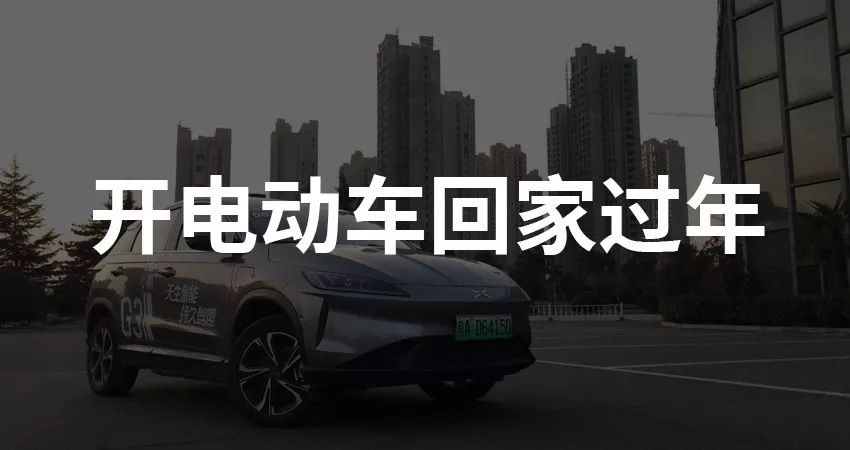For the Hu-Bei people working in Shanghai, the most challenging thing of the year would be to get a cheap ticket for the lower berth to go back home from Shanghai railway station. However, based on my experience from previous years, this competitive event that combines mobile phones, internet speed and reaction speed, isn’t my strong suit. Normally, I can only buy “red-eye” sleeper seats with a duration of over ten hours and even those are just standing tickets. Just when I was at a loss, a message in a group chat caught my attention.

I immediately checked the distance from my workplace to my hometown, which is about 1000 kilometers, with a predicted 13 hours of driving according to Gaode maps. Considering stops for charging, meals and rest, I estimated that it would take me two days to get home if everything goes smoothly.
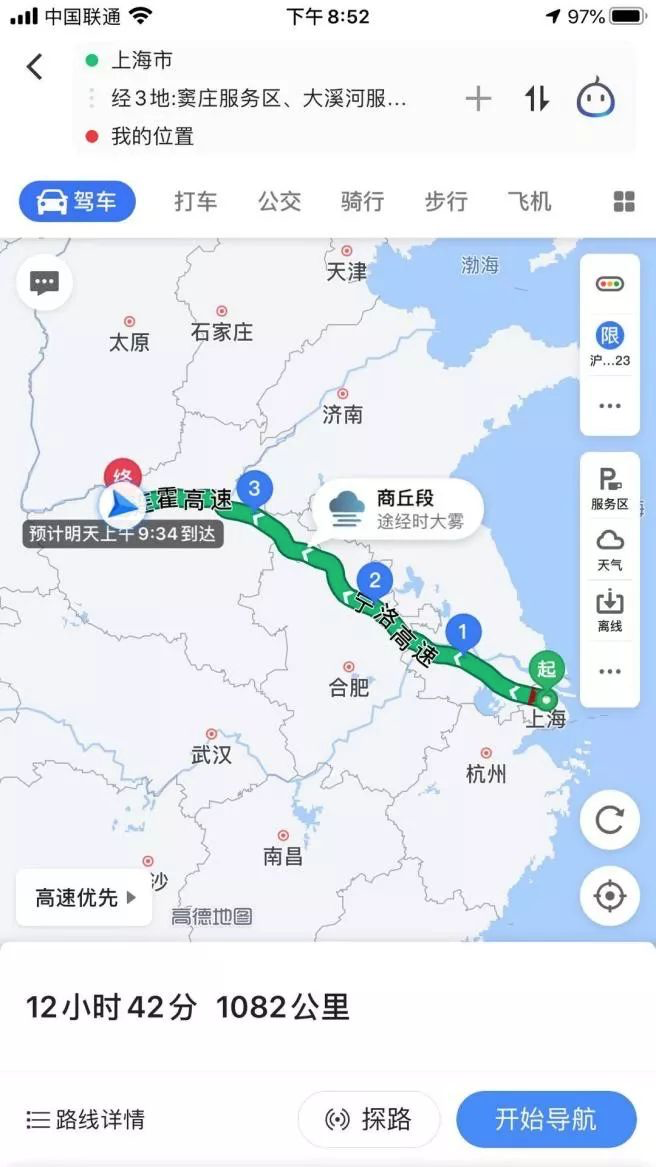
But regardless, compared to a standing ticket that takes nearly 15 hours, I would still prefer to drive. Some friends may think that although driving is more comfortable and free, one has to remain focused the entire trip, so there isn’t much difference between the two, and both will be exhausting.
However, I don’t think so. I really enjoy the feeling of driving on the road and I have always planned to take a long-distance self-driving trip, not for any destination, but just to enjoy the process of driving. It’s like some people would invite friends to take a drive on the mountain roads during weekends, or go together to a familiar tuning shop to fiddle with parts that are not necessary at all. There is nothing particularly special about the mountain scenery or tuning parts. What really matters is the pleasure that comes from loosening the restraint of your right foot over and over again, which only like-minded people can understand.
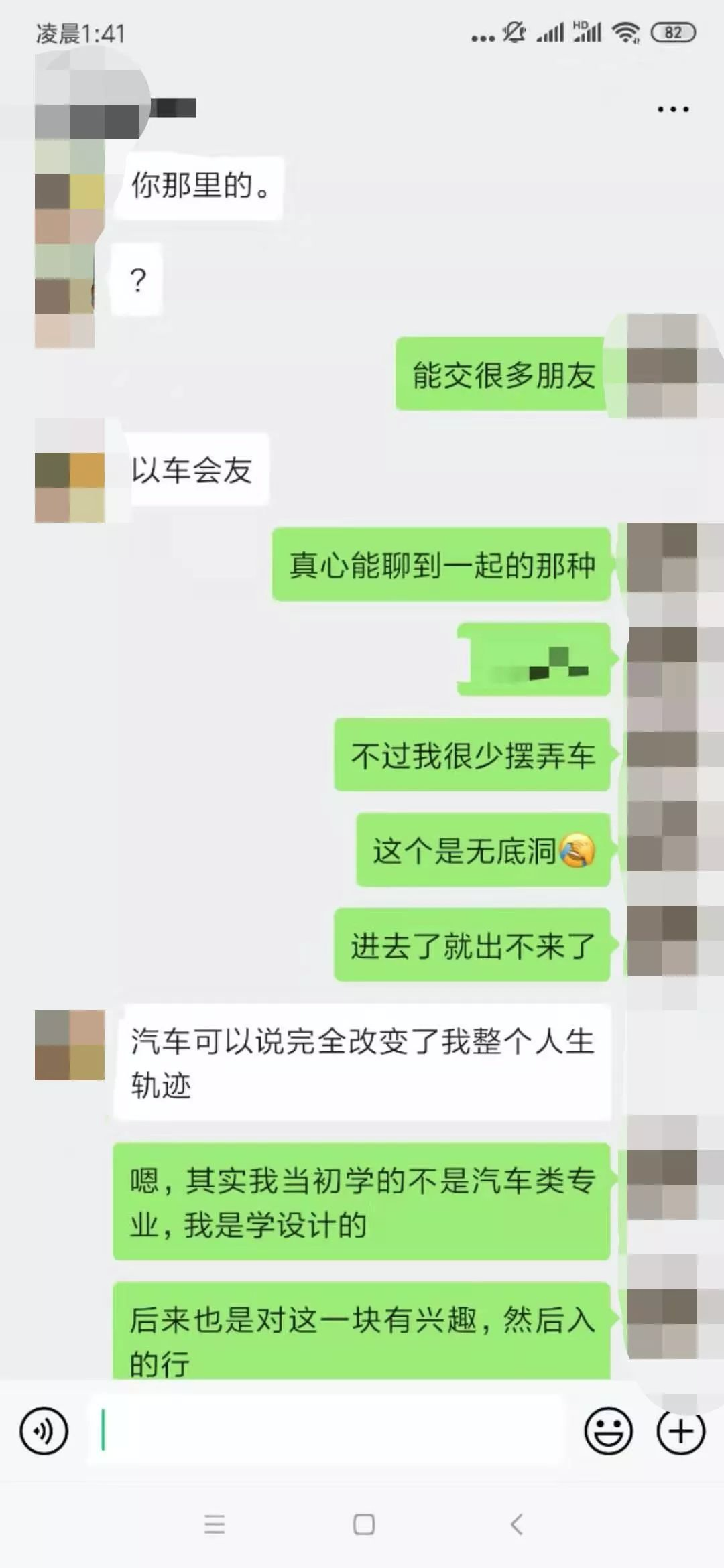
This was the Tesla Model X owner whom I had only known for three minutes.
Yes, this is what we want.
In addition to satisfying my interest, I also took on a special task during this trip, “to test the construction of high-speed charging stations in recent years and answer the question, whether it is feasible to take an electric car on a long-distance trip?” After receiving everyone’s “blessings,” I set off.

Preparation
Originally, I planned to leave on the 20th, but due to some unexpected events that day, I was delayed for a day. The next day, in order to save time, I communicated with the car borrower in advance and asked him to help me charge the car. Afterwards, I went to get the car with my luggage and prepared to set off directly.
When I was loading my luggage into the car, I found that the G3 had no spare tire, but this also made the trunk of the G3 very practical. Although it didn’t look very spacious at first glance, the space underneath the luggage cover was still quite substantial.
The rear seats also support a 4:6 folding ratio. As long as the refrigerator and washing machine purchased by your family come with delivery service, you won’t find them lacking.
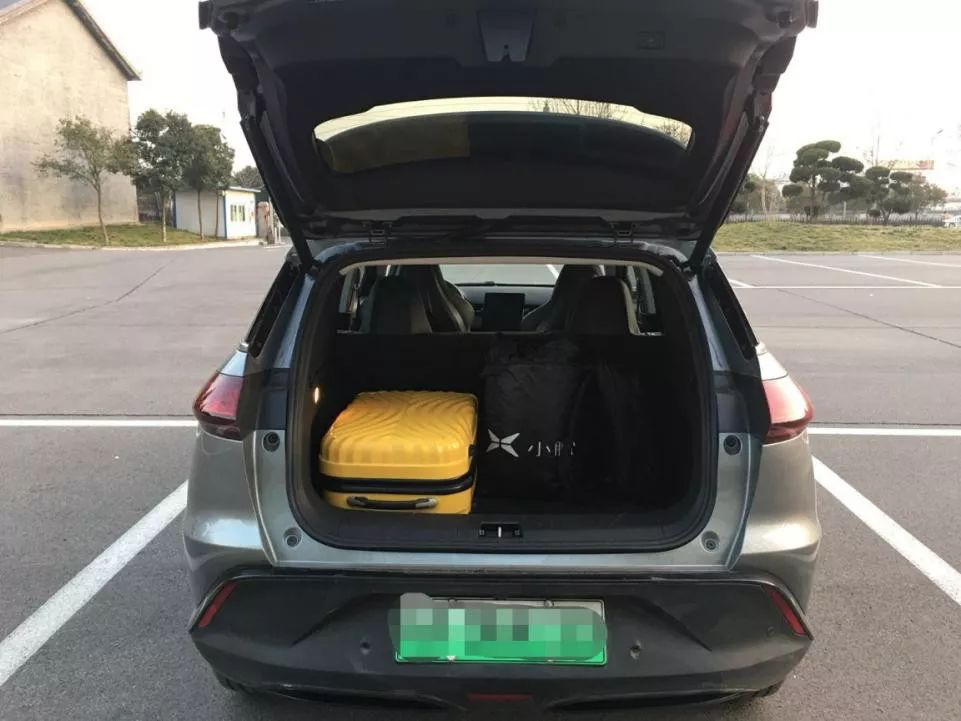
The most worrying things for people driving electric cars for long distances are the endurance and charging issues. I’m no exception, so I went to the store a week before departure to test drive the car, familiarize myself with the condition of the car, plan my route, and ask the store manager about how to use tire repair liquid. Because I have to drive more than 2000 km round trip this time, and if everything goes smoothly, I will run for a total of 4 days. Preparation is key.
As for charging, I compared several apps such as “Gaode Maps,” “Jiadian,” “E Charging,” “XPeng Navigation”. After comparing them, I decided to use the XPeng official car version of Gaode Maps, which is the XPeng car version of Gaode Maps.
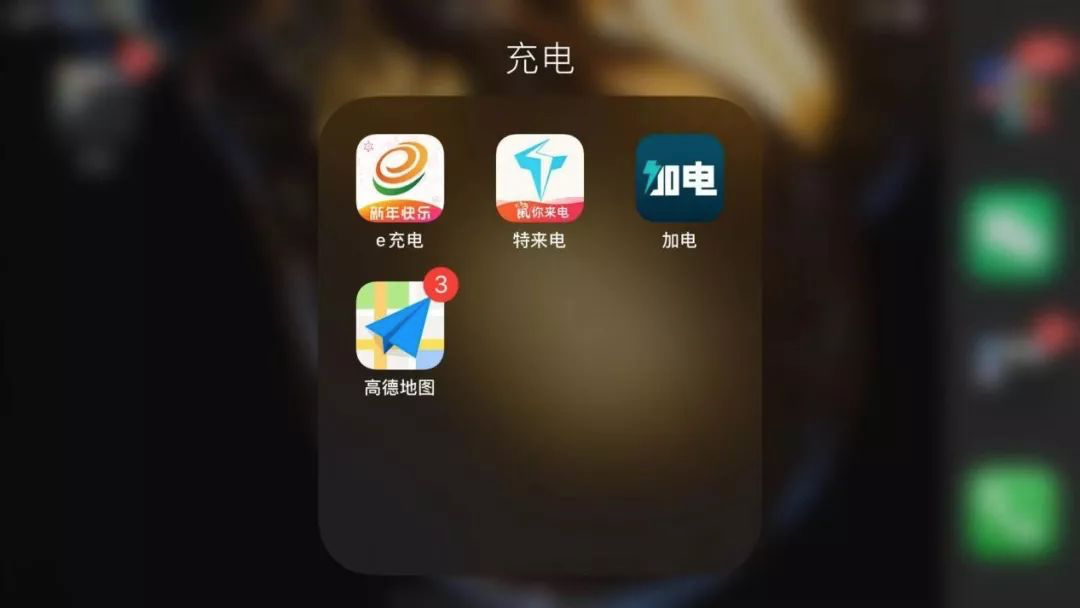
Compared with the other three apps, I think XPeng’s car version of Gaode Maps has more advantages, because it directly improves the “charging station” function in the “search along the way” feature of Gaode Maps.
After setting the route, users can directly select where to stop for charging on the map and estimate the remaining battery life when arriving at the destination. Compared to other apps, which only can view on the phone, this display is more intuitive and convenient.
In addition, there are practical functions such as setting the automatic avoidance of vehicle restrictions by license plate.
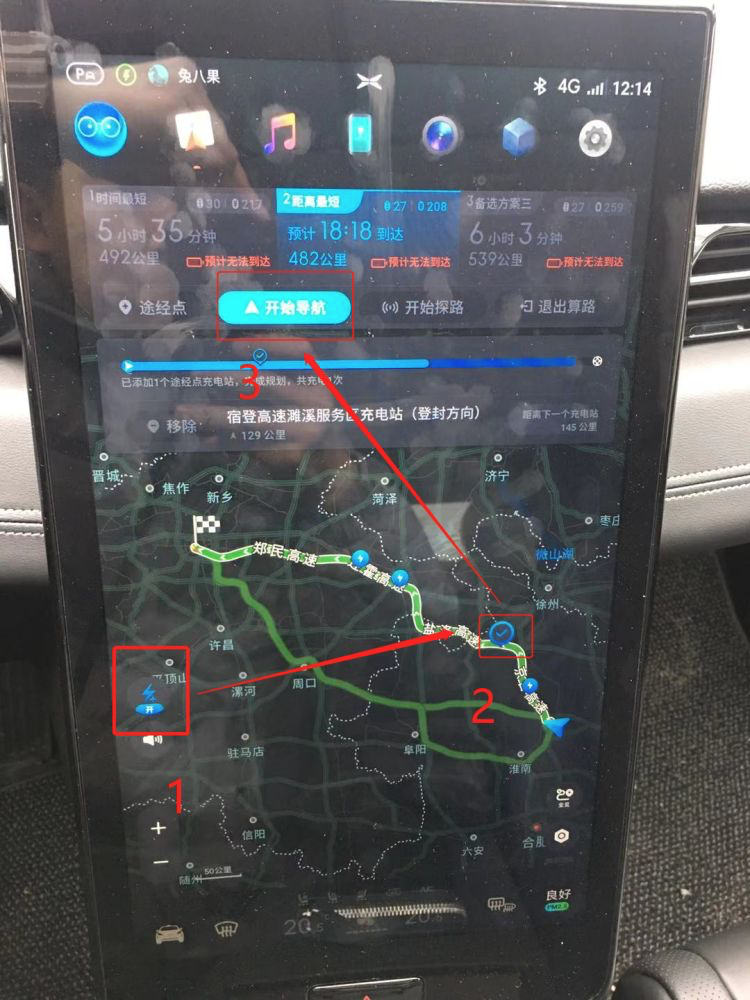
After entering the destination on the map, you can set the navigation according to these 123 steps.
Day 1: Shanghai – Bengbu
“JunGong Road, Shanghai” – “Douzhuang Service Area”
Departure time: 13:00, displayed mileage 518km.
To be stable, I set the vehicle to “Eco mode”, “Regenerative Braking” is set to the highest, and the high-speed section chose to take the Hu-Jia High-Speed, Shen-Hai High-Speed, Hu-Wu High-Speed, Hu-Rong High-Speed, and Ning-Luo High-Speed. The charging piles on this route are the most among the three routes, so even if I miss the service area I need to go to, there is no problem.
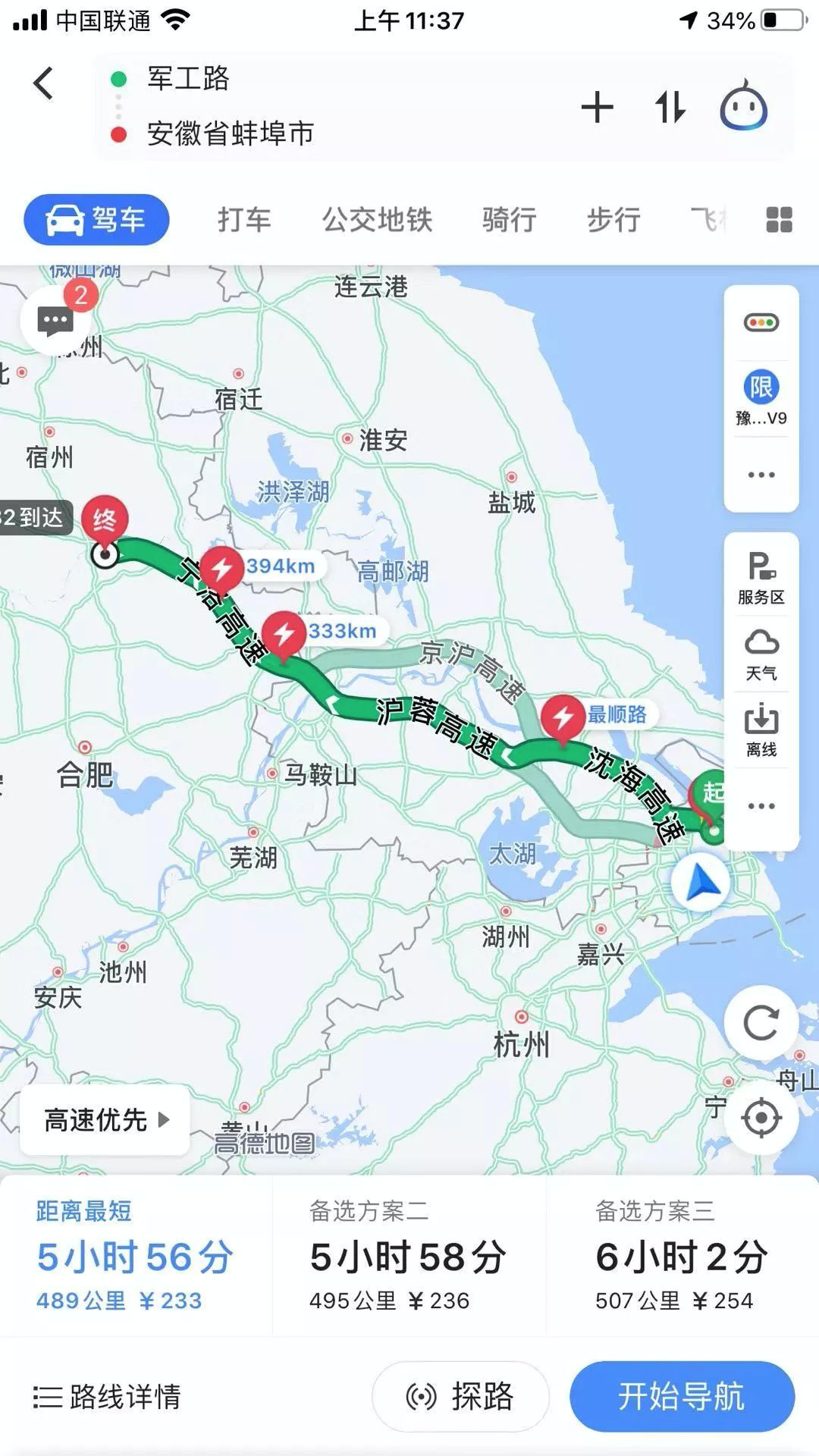
But the plan didn’t keep up with the changes, I originally planned to arrive in Bengbu around 8:00 pm and find a hotel to rest, but the six car accidents I encountered on the way completely blocked my way.
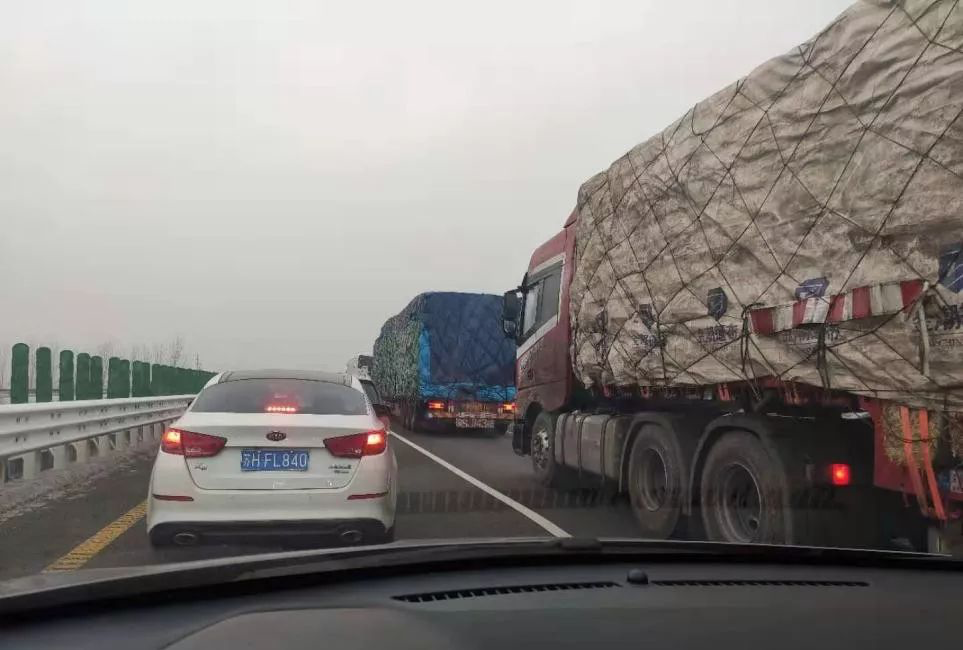
Traffic jam.
It wasn’t until 18:30 in the evening that I arrived at the “Douzhuang Service Area” to recharge. On this route, I basically used assistive driving. The lane-keeping and ACC (Adaptive Cruise Control) helped me save a lot of energy, so although the time was long, I did not feel very tired.
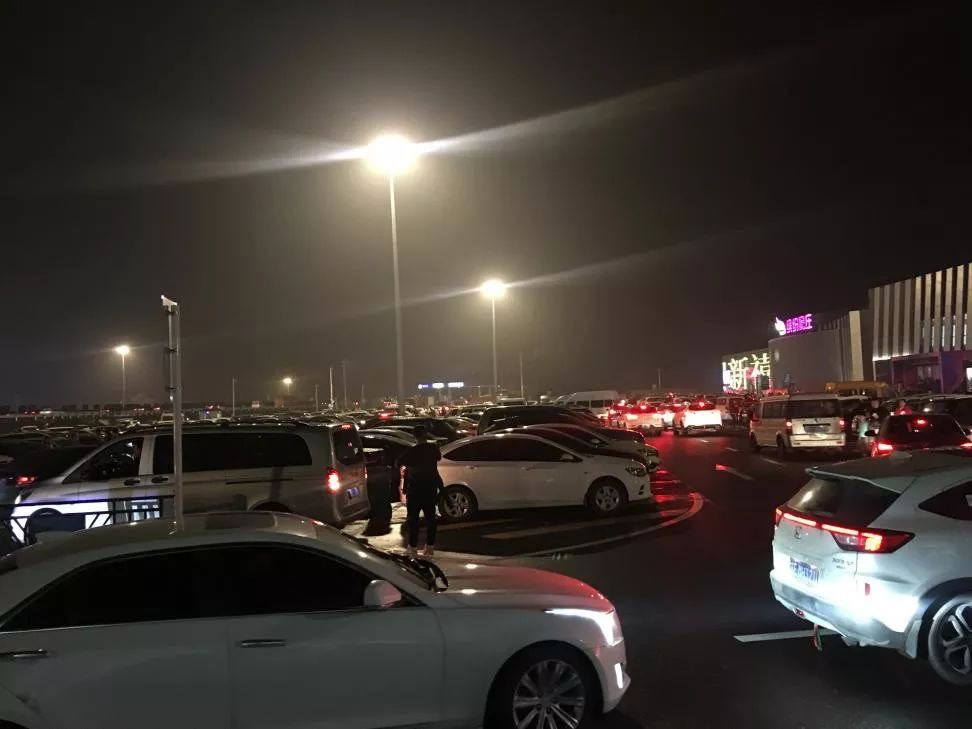
Douzhuang Service Area.
Speaking of this, I must talk to everyone about it. Many friends think that the obstacle to driving long distances on electric vehicles is endurance, but based on my experience of this journey, I found that it is not that simple.
First of all, it was the car accidents. In just over 200 kilometers, I encountered a total of 6 car accidents, which caused most of this journey to be limited to around 80 km/h. These accidents were basically caused by tire problems. Imagine, if these six car owners could have done a check on their cars before departure, then I think many troubles could be avoided.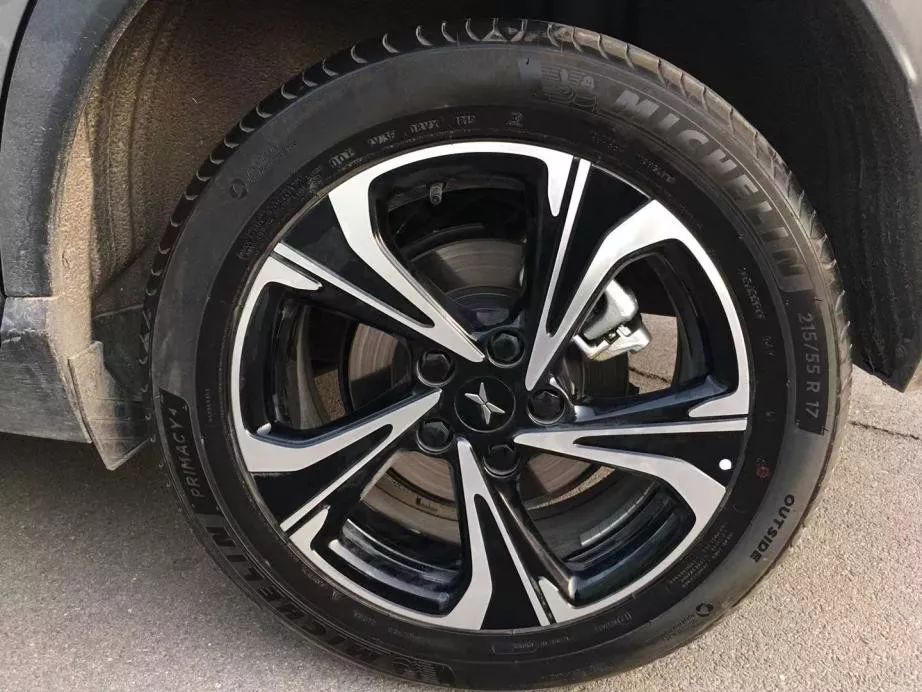
Before departure, I specifically checked the condition of the tires.
Another important point is the awareness of regulations. Although it is a highway, the phenomenon of changing lanes without signaling and illegally occupying emergency lanes still exists. I even saw a situation where a car accident handling vehicle was blocked by two private cars until the highway traffic police came to clear the way.
Here is a little story. When there were about 20 km left to Douzhuang Service Area, because of the rain, the “Lane Keeping” function could not be used, but the “ACC Adaptive Cruise Control” function was still effective. At this time, the vehicle reminded me in time by tightening the safety belt and making an emergency sound.
Therefore, I want to remind everyone that if you use assisted driving in a situation where your vision is not good, you must remain vigilant and be prepared to take over the steering wheel at any time. At least, this is still needed at this stage.
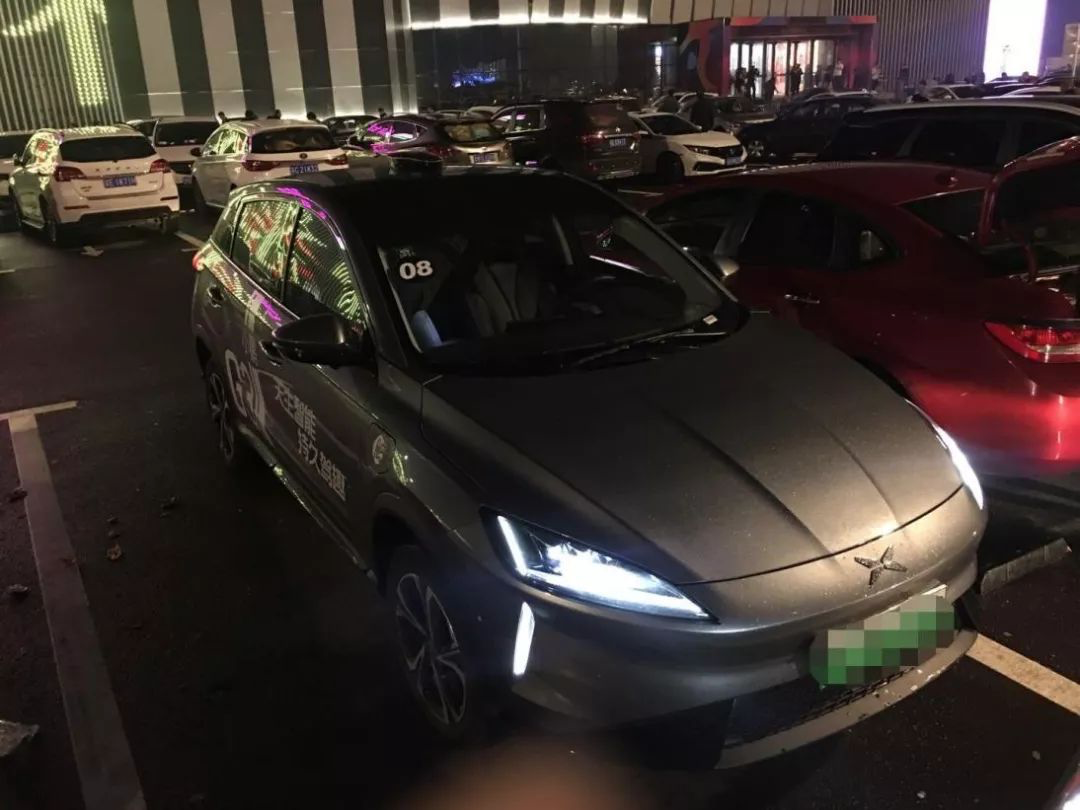
Arriving at the “Douzhuang Service Area”, because it was the peak period of heading home, there were a lot of people here. It was also the service area where I encountered the most new energy vehicles on this road. Thanks to the inherent friendship of new energy vehicles, I met two Roewe Ei5 owners next to me just one minute after getting off the vehicle.
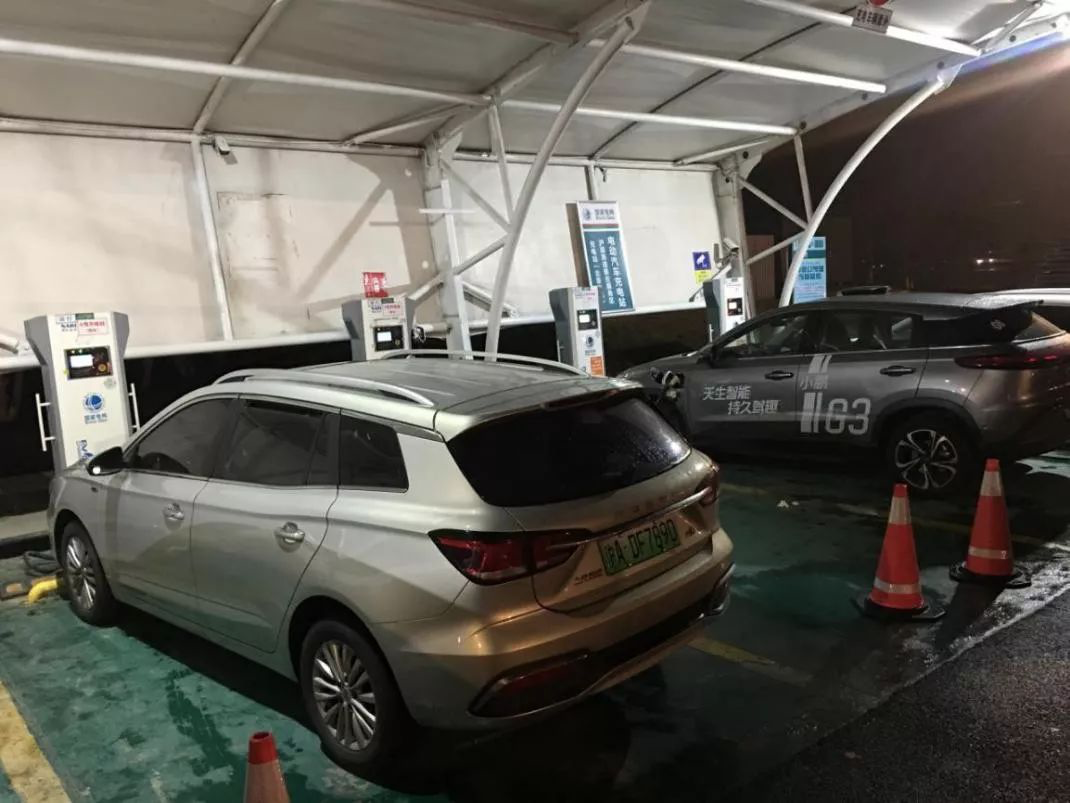
From the conversation, I learned that they also set out from Shanghai in the afternoon. Compared with cautious players like me who rarely use air conditioning to ensure endurance, they are particularly experienced in grasping the power of the battery.
Although their car has only 420 km of NEDC endurance, they are very familiar with the charging situation because they often travel back and forth on this road, so they basically run at top speed and are not at all stingy with air conditioning usage.
When they learned that my G3 has a NEDC endurance of 520 km, they also advised me to relax a bit before leaving the “free postage area”, use the air conditioning as much as needed, and consider entering the service area when there are only about 150 km left to drive.
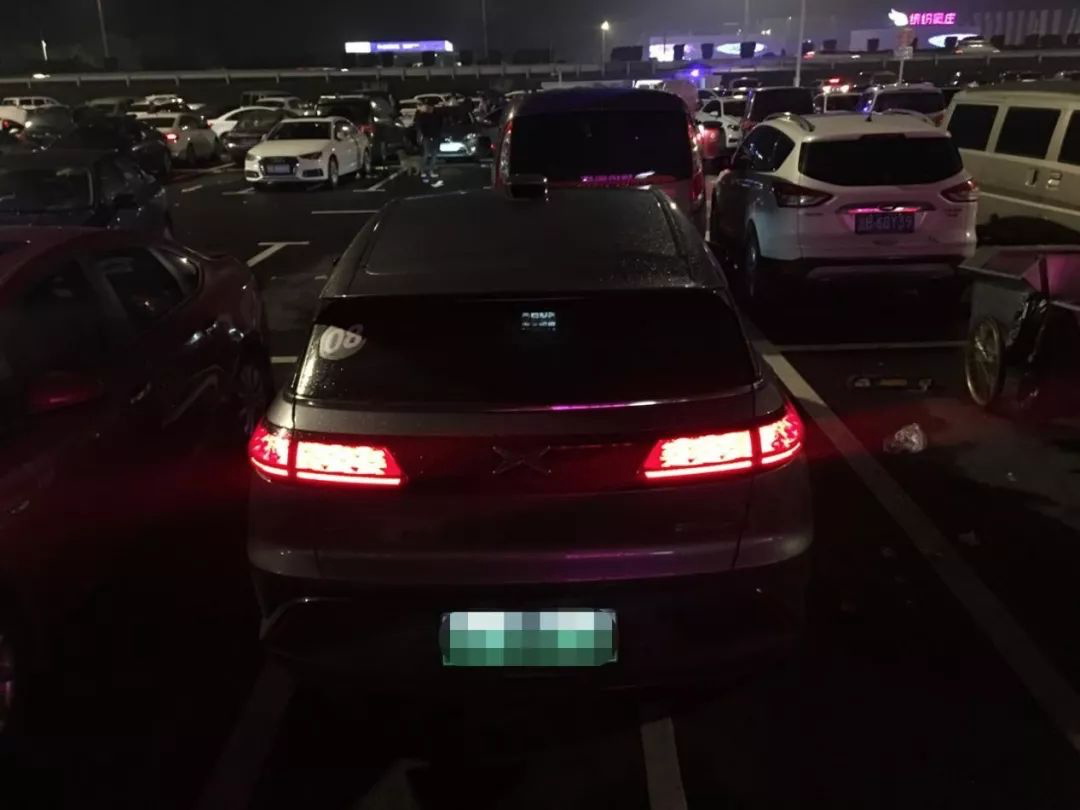
After charging the vehicle, you must leave the charging spot as soon as possible.Based on my experience so far, I plan to accept the suggestions of two car owners and try to speed up as much as possible. After all, there are still more than 200 kilometers of road to go, and if there is another traffic jam, I may not arrive in Bengbu until the latter half of the night.
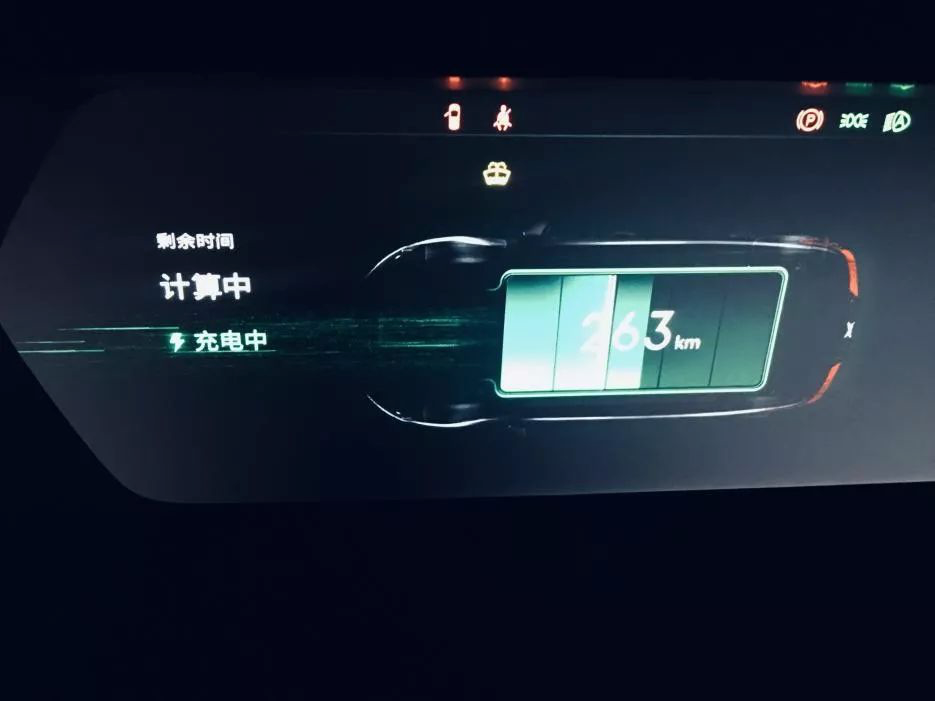
Insert the charging cable upon arrival.
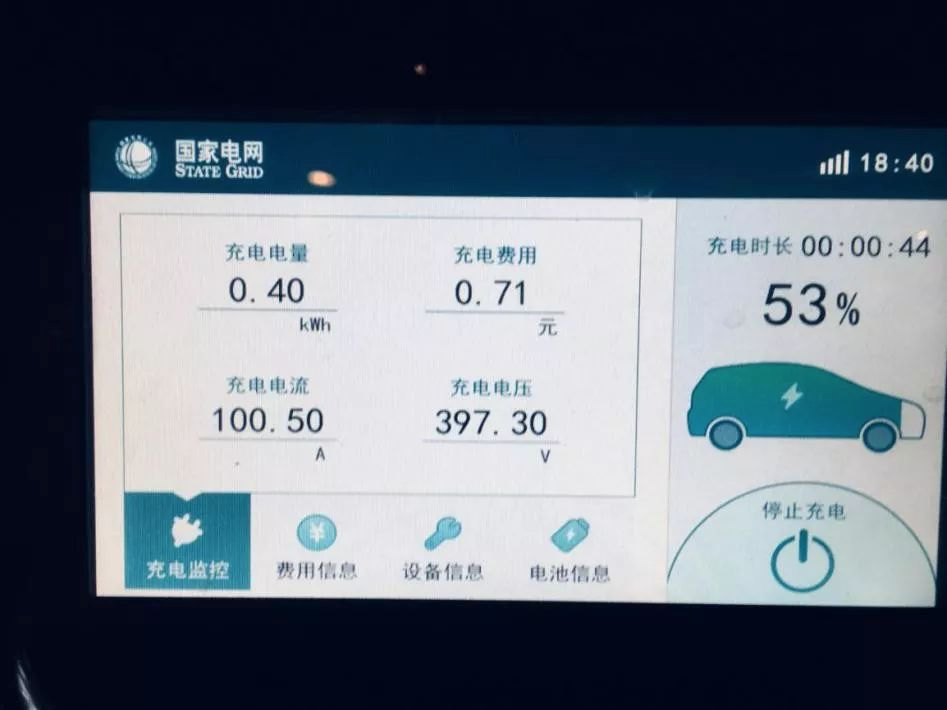
Current charging information.
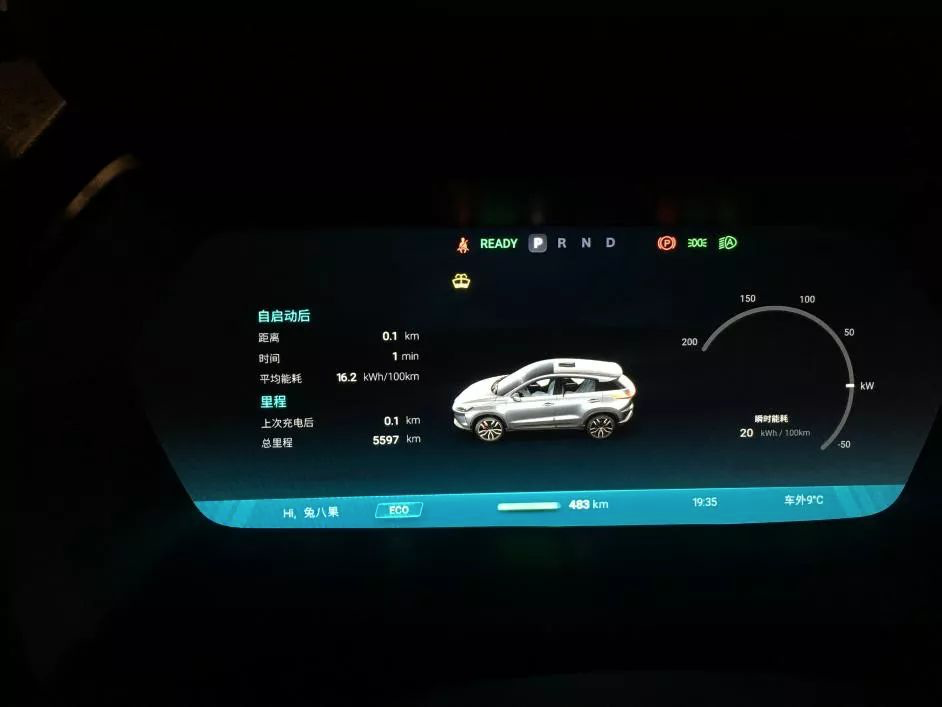
Supplemented to 483 km and ready to continue the journey.
“Douzhuang Service Area”-“Daxi River Service Area”
Departure time is 20:20, and the odometer reads 483 km.
After dinner, I took a necessary rest and set off again at 20:20. The first 100 kilometers from the “Douzhuang Service Area” were very smooth, but it started to rain in the later half, and the display screen on the Longmen Bridge on the highway began to remind passing drivers to concentrate and control their speed. But even so, I still encountered two accidents, this time it was the tires…
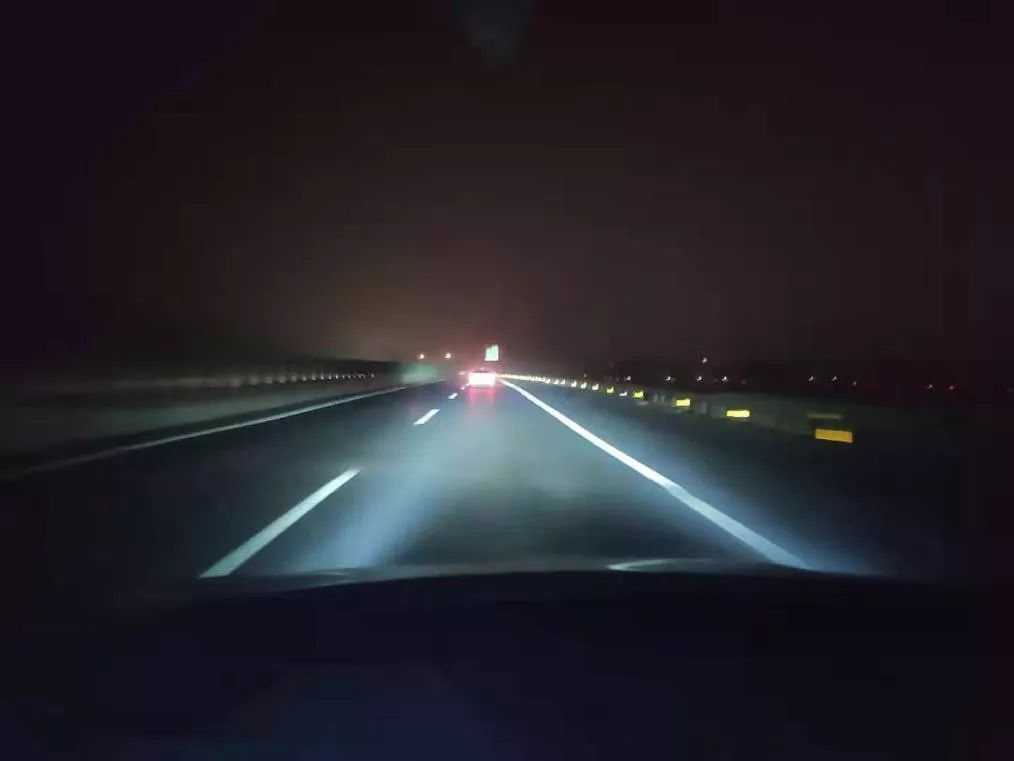
At midnight, in the rain, and with two accidents, I started to get nervous. In order to avoid being in a dilemma, I took over the steering wheel in places where I thought the lighting was poor, and then handed over the control of the vehicle to the assistant driving system when reaching areas with slightly better lighting.
I did this not only to make myself feel more at ease but also because I had been on the road for a long time in the afternoon, and although I had rested, my body was actually in a state of fatigue. If I didn’t keep myself more alert, besides coffee and music, I thought it would be insufficient.
Finally, at 01:05 in the early morning, I arrived at the “Daxi River Service Area.” There were fewer cars on the road, and the speed was faster. After leaving the rainy area, the speed of the car was generally stable at around 100 km.
There were already few cars when I arrived at the service area, and a Guangqi Aion S was charging at the charging station. Because I was already very tired, I only saved the necessary data and rested in the car.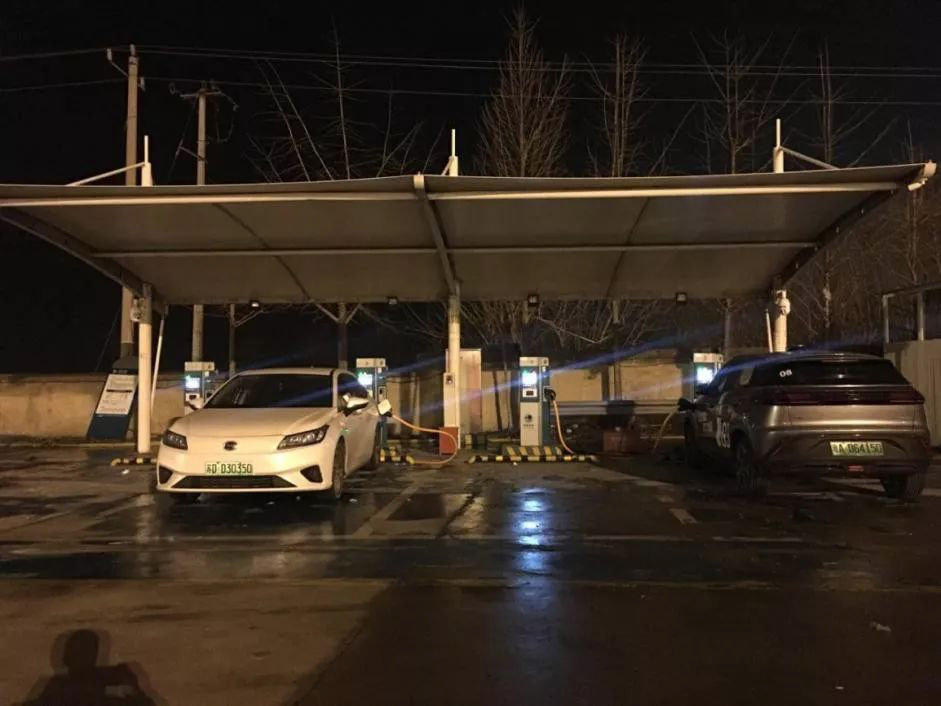
Encountered an Aion S at the charging station.
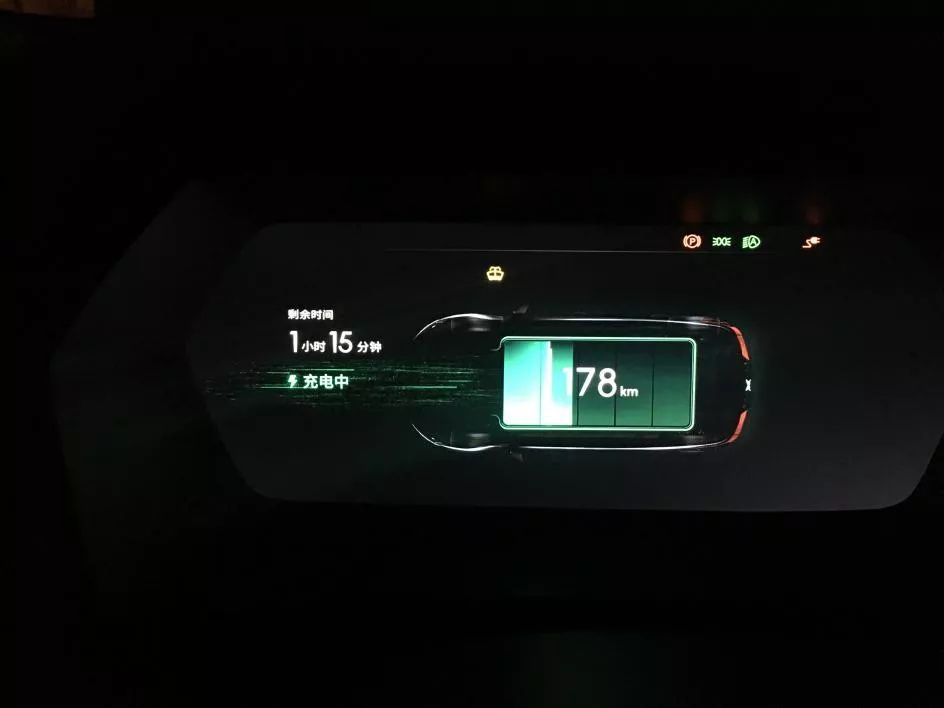
The display shows 178 km remaining.
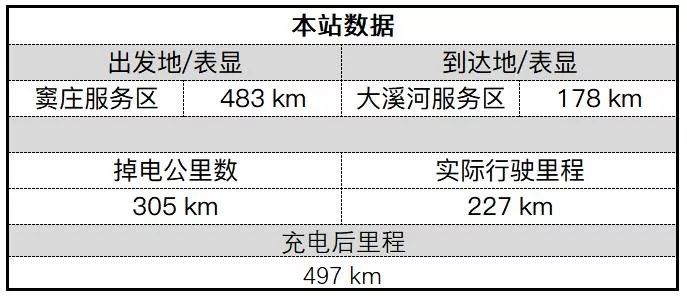
“Daxihe Service Area” – “Bengbu City”
Departure time is 02:12 with a displayed mileage of 497 km.
When charging at “Daxihe Service Area”, I intended to charge to around 300 km and then find a hotel with charging stations to continue charging, so I could continue driving the next day at noon.

However, as it was already late at night, most hotels only had one staff member left to handle check-ins, and they couldn’t confirm whether the charging stations were available.
To ensure stability, I chose to charge to a satisfactory level at the service area before departing, so that I wouldn’t need to find a charging station in the city the next day.
Perhaps too many people had left the highway earlier, as the nearest few hotels to the highway exit were all full, so I had to choose a hotel in the city. After arriving at the hotel, I simply freshened up and went to sleep.
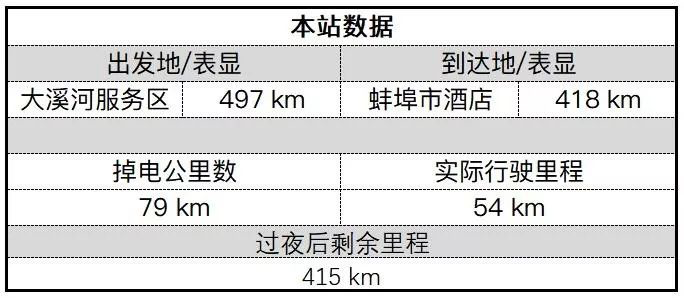
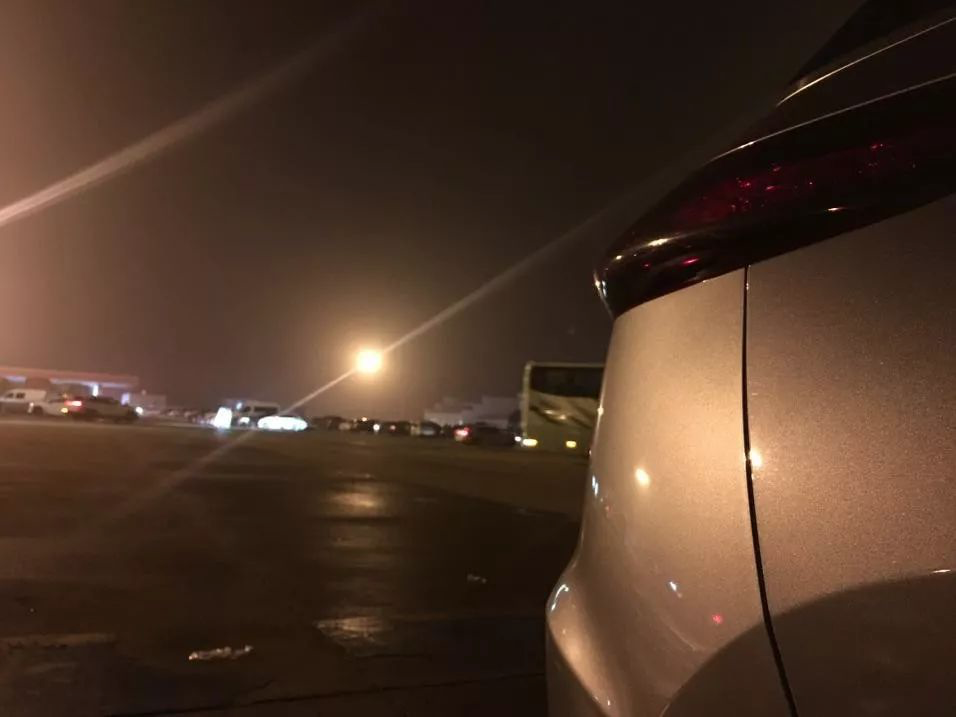
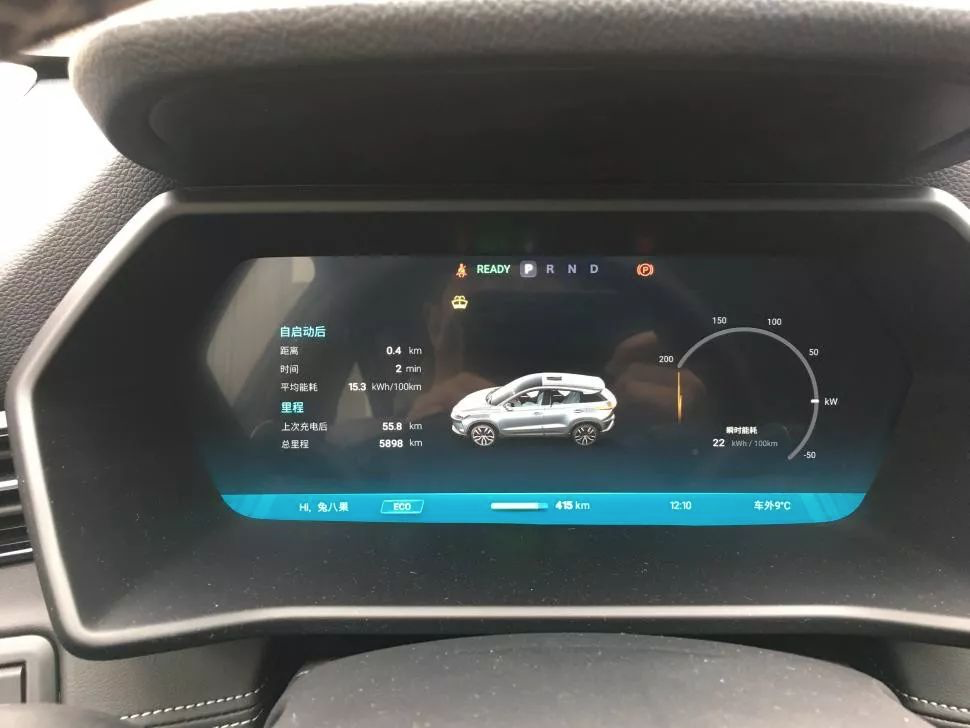
The next day at noon, there were still 415 km remaining.
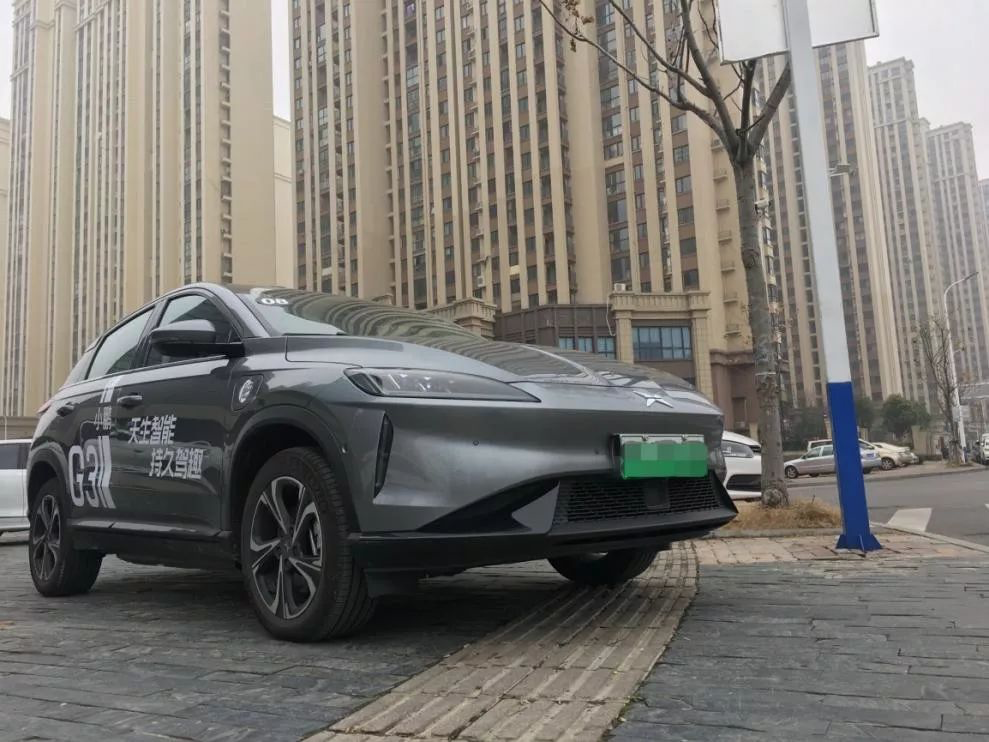
Departing once again, refreshed.## Day 2: Bengbu City – Luoyang City
“Bengbu City Hotel” – “Suixi Service Area”
Departure time: 13:03 in the afternoon with an odometer reading of 415 km.
The journey from Bengbu was smoother than yesterday and it didn’t rain. Since I had accumulated rich experiences yesterday, I drove with peace of mind today and used assisted driving for most of the journey, which was easy.
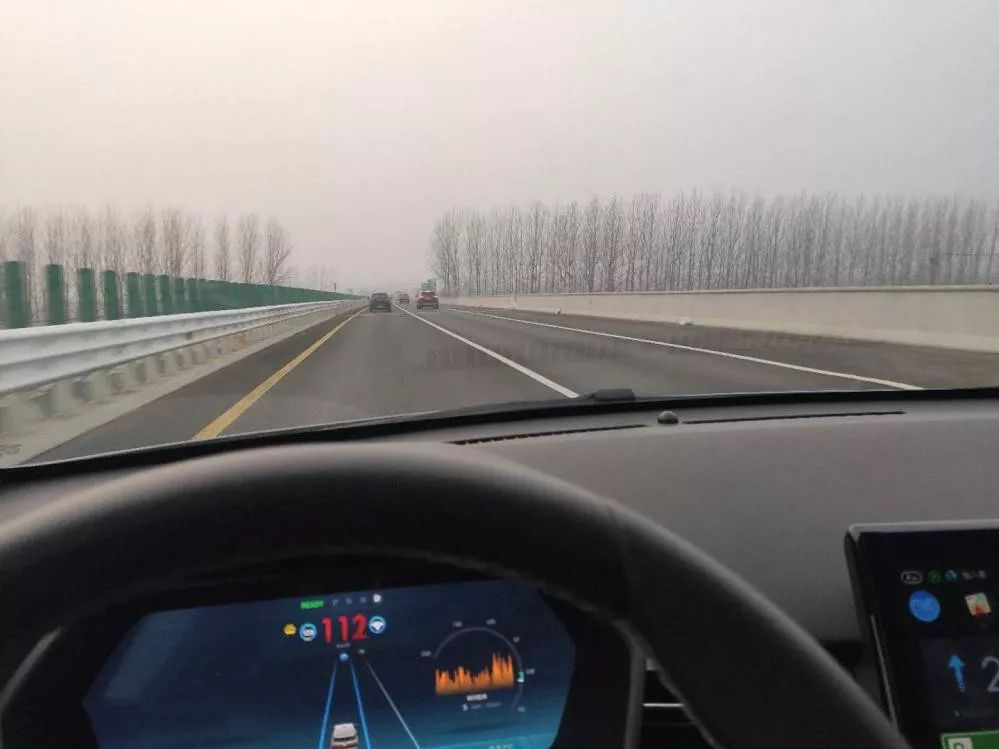
At 15:39 in the afternoon, I arrived at the Suixi Service Area. After I charged up, it took about 20 minutes, and a BYD e5 carrying a family of three arrived next to me.
At this point, XPeng once again entered into “friend-making” mode. After talking to them, I found out that they had driven from Suzhou and were also going home for the Spring Festival. This was also their first long-distance drive, so they did a lot of research and were afraid of running out of power on the road.
So I shared with them my charging experience on this journey and showed them the “along the way search” function of Amap. In return, I received two oranges.
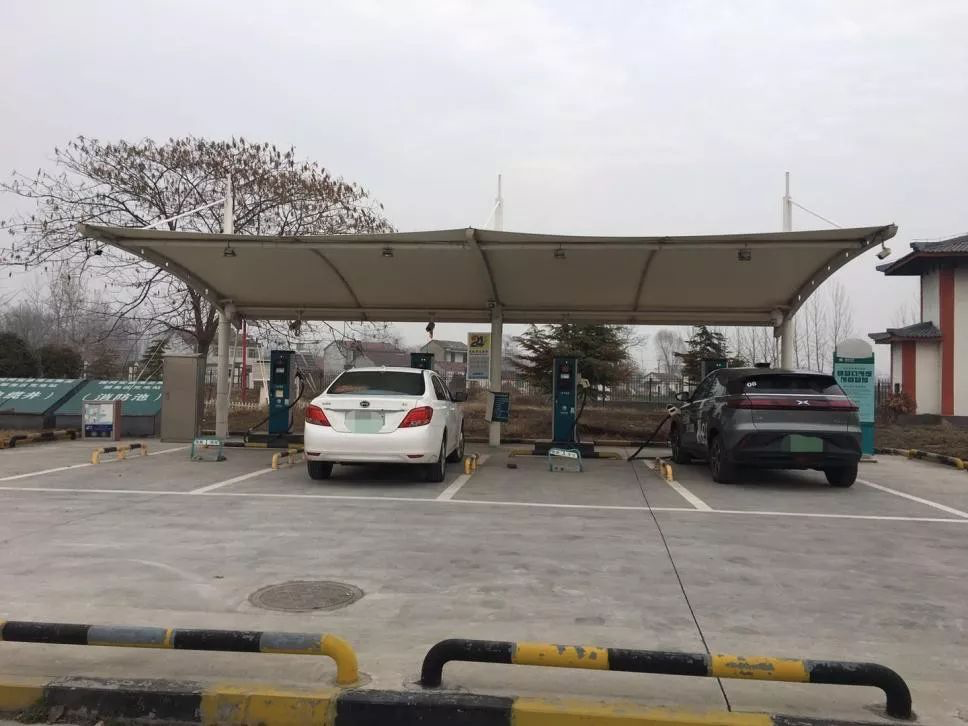
BYD e5 I met in Suixi
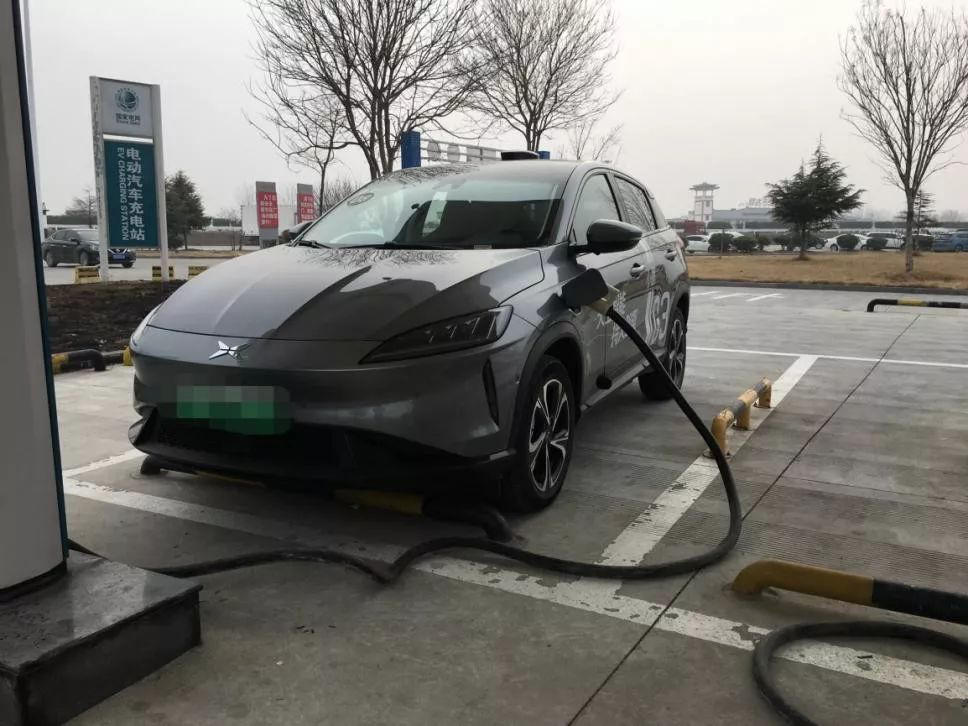
The next station will enter Henan Province. Since the main force of new energy vehicles in China is still concentrated in the south, I judged that there may be a low utilization rate of charging piles in my hometown, and there is a risk of not being able to use them. I also observed that not every station has a charging pile, so I decided to wait a little longer in Suixi to fully charge the battery to be prepared for the worst.
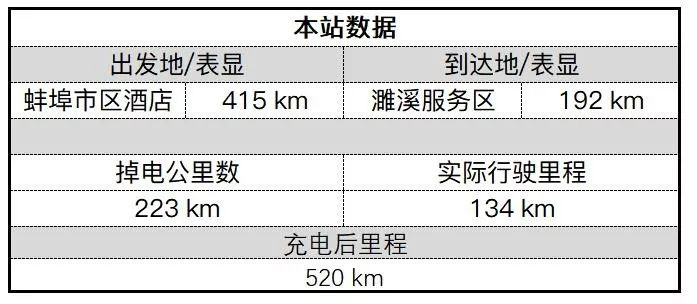
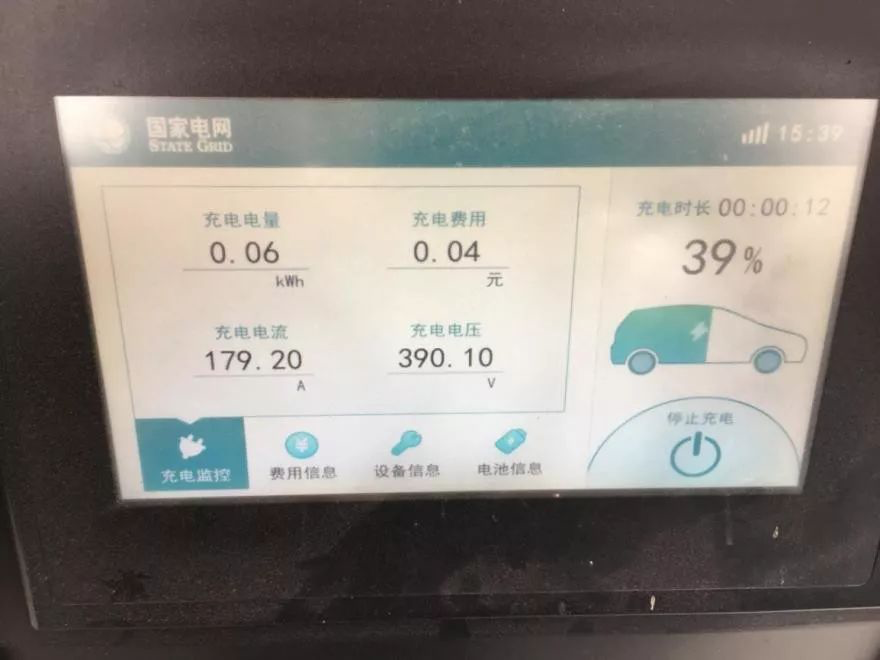
Battery life remaining: 39%, odometer reading: 192 km
“Suixi Service Area” – “Shangqiu Service Area”
Departure time: 16:45, odometer reading: 520 km.
Starting from Suixi, everything went smoothly along the way. However, as we continued to travel north, the outside temperature gradually dropped. This was not good news for an electric car running at high speed.
What was even more worrying was that when we arrived at the “Shangqiu service area”, the thing I was worried about happened. I had planned to recharge here to about 400 km and then head straight to the “Zhengzhou service area”.
However, out of the four charging stations in the service area, only one was available. The other stations had a small line of text describing a fault, and the remaining station was occupied by another charging vehicle, who had only just finished charging.
I asked the owner of the charging vehicle how long it had been since they had finished charging, and soon after another NIO ES6 with only about 40 km left arrived.
At this point, I couldn’t help but sigh. This was really a case of “What you fear, what will happen”
Thankfully, I had fully charged at the “Suixi service area” beforehand. At this point, the display still showed a range of 265 km, which was enough to get me to the next service area. So I prepared to move on to the next service area.
After a short rest, I set off again from the “Shangqiu service area” to the “Ningling service area”. At this point, my remaining battery power was still sufficient and the distance between the two stations was only 43 km. This did not affect me too much, but I was still worried that if I couldn’t charge at the next service area, it would be really embarrassing.
When we arrived at the Ningling service area, I had 196 km left and the outside temperature had dropped to 3℃.Due to the lesson I learned before, in order to ensure that I can smoothly get home tonight, I decided to fully charge my car here, although “Zhengzhou service area” is a large service area and should not have any problems, but at this time the staff at the service area have already finished work. In case of special situations, my battery is enough to support me to “Luoyang service area”.
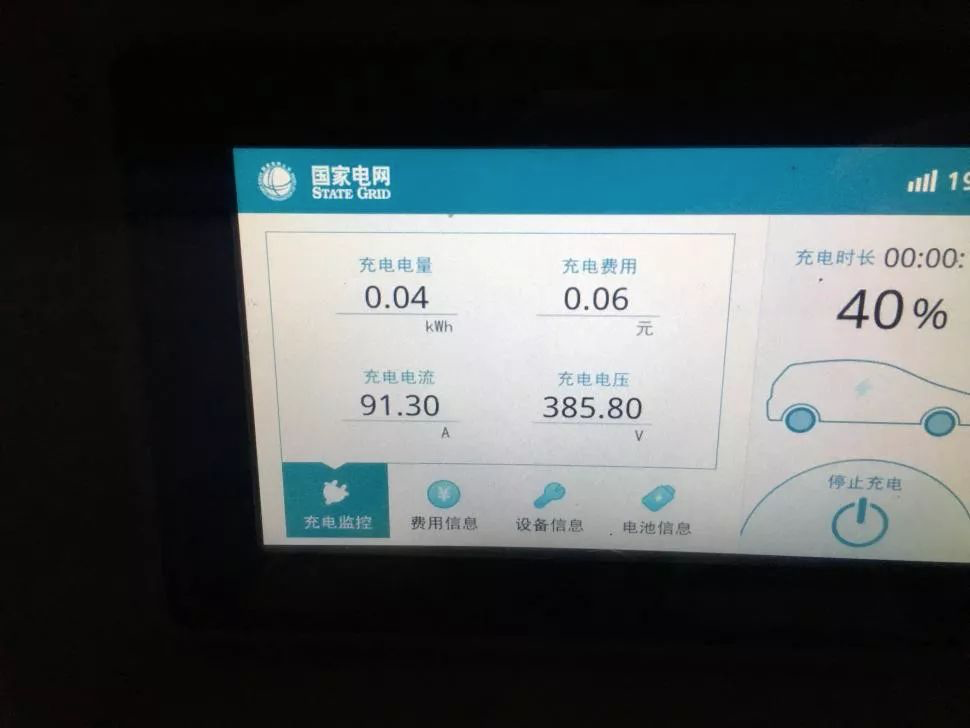
Charging speed is much slower than before.
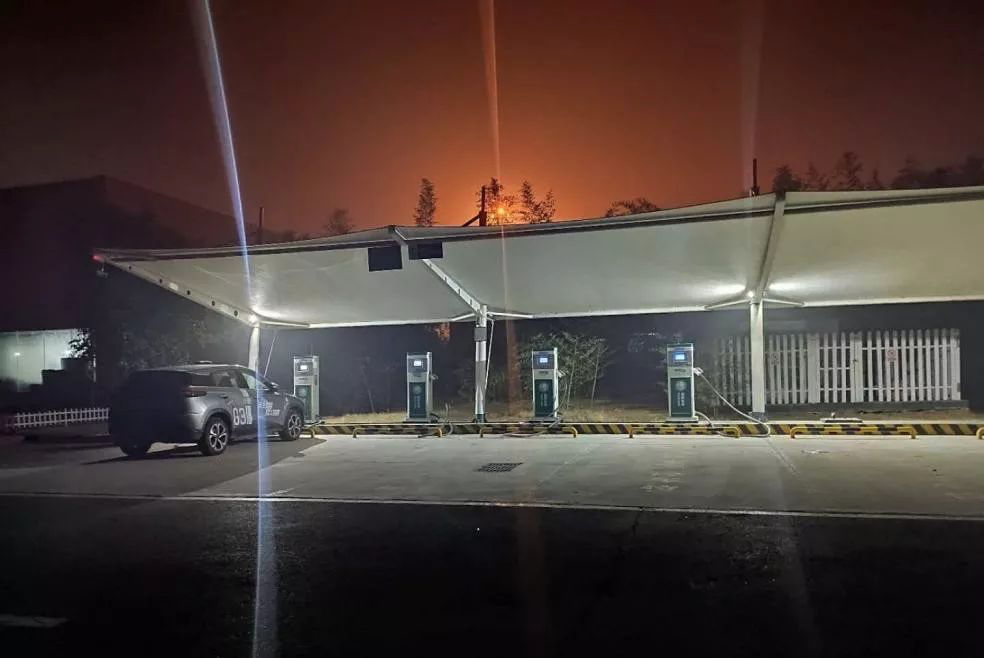
Only my car is charging.
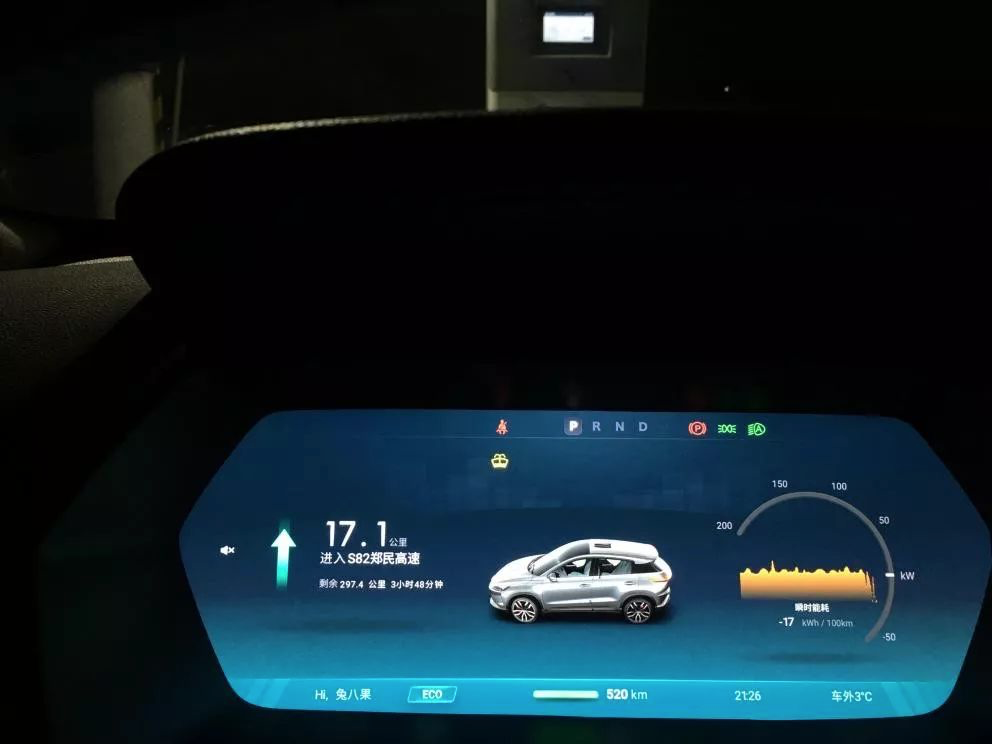
Fully charged at Ningling service area.
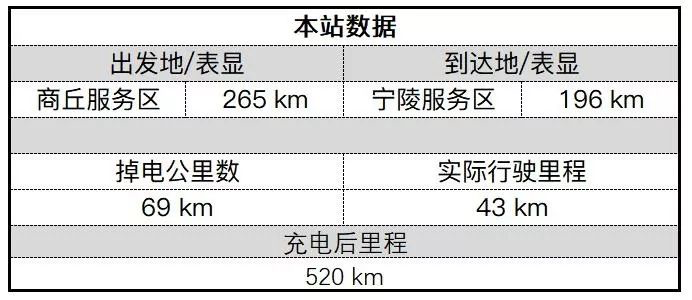
“Ningling service area” – “Zhengzhou service area”
Departure time is 21:26, the displayed range is 520km.
This section of the road is the most frightening part of the trip. Shortly after departing from Ningling service area, the fog started to rise on the road, and visibility instantly decreased. Some gantries even equipped with strong penetrating green guiding lights to help vehicles identify the direction, it seems that there is often heavy fog in this section of the road.
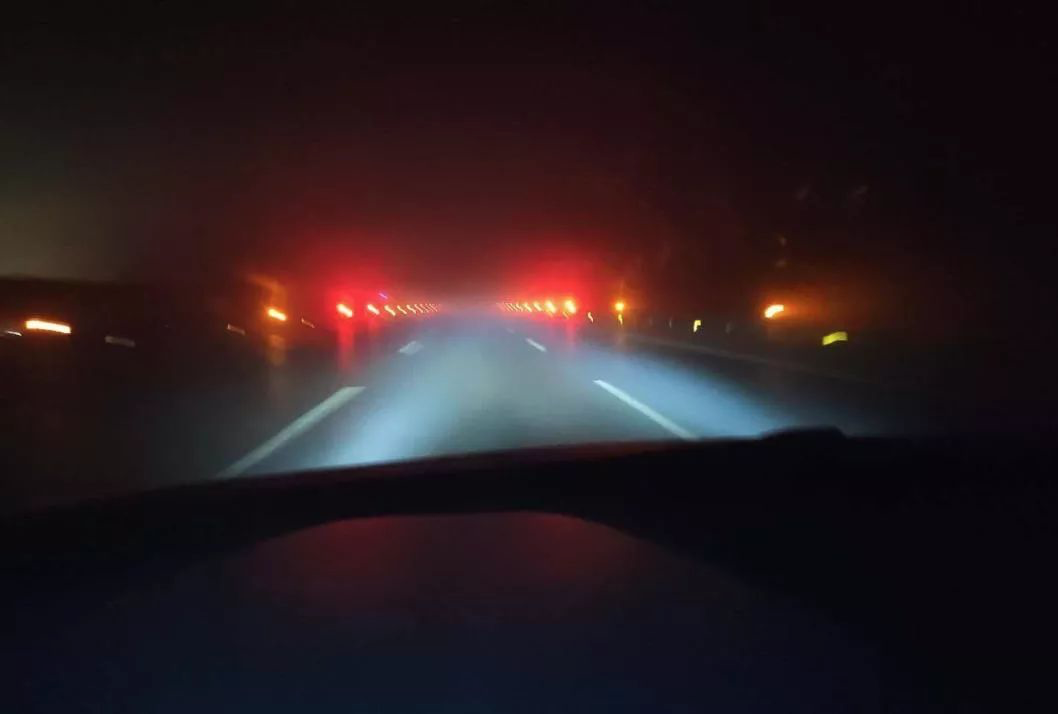
Due to the thick fog, all vehicles’ speed became very slow. At my slowest, the speed could only be maintained at 40 km/h. The high beam’s illuminating range was firmly locked by the fog, and all vehicles drove slowly with hazard lights on, fearing accidents might happen.
If you haven’t driven in the fog, you can recall a horror movie you have seen before. At midnight, the protagonist drove on a road with heavy fog, but the view on the road was blocked. Suddenly, a ghostly figure appeared in the middle of the road… the driver couldn’t avoid it and crashed into it… (This paragraph material is taken from the plot of the first two episodes in the American TV series “Evil Spirits”.)Returning to the topic, my vision gradually worsened, and since good vision is a prerequisite for the use of the lane keeping, it was no longer an option. However, the adaptive cruise control (ACC) could still work, so I geared up and prepared for any potential emergencies.
But a heartwarming scene occurred. Almost all the cars slowed down, spontaneously maintaining a safe distance, without accelerating or overtaking, to avoid a possible rear-end collision caused by an emergency brake.
At this point, I could see around four cars around me, with the tallest truck acting as a guide for all of us. Thanks to the numerous side-marker lamps on the truck, it led the way for about half an hour before exiting the highway.
The fog still lingered, but a daring driver in an old Toyota Highlander with license plate Yua stepped up as the new guide, and almost all the cars followed him.
We drove for another half an hour until I passed through the foggy area, gradually gaining better visibility, so I accelerated towards my final destination, the “Zhengzhou Service Area.”
When I arrived at “Zhengzhou Service Area” at 00:18, midnight, since I was close to home, I decided to spend some time resting and recharging there, to calm my nerves after the tense experience.
I fully charged my car at the “Zhengzhou Service Area” before continuing the remaining 186 km journey.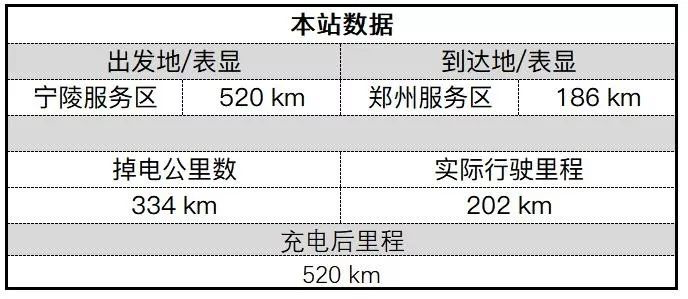
“Zhengzhou Service Area” – “Old City District of Luoyang” (End Station)
Departure time 01:29, the odometer shows 520 km.
This section of the road is very calm, there is no heavy fog, no traffic jam, and there are almost no cars on the road except for my own. Although there is still about one more hour to go, my spirit has recovered after the rest just now. Due to my eagerness to return home, I have basically not reduced my speed on this road.
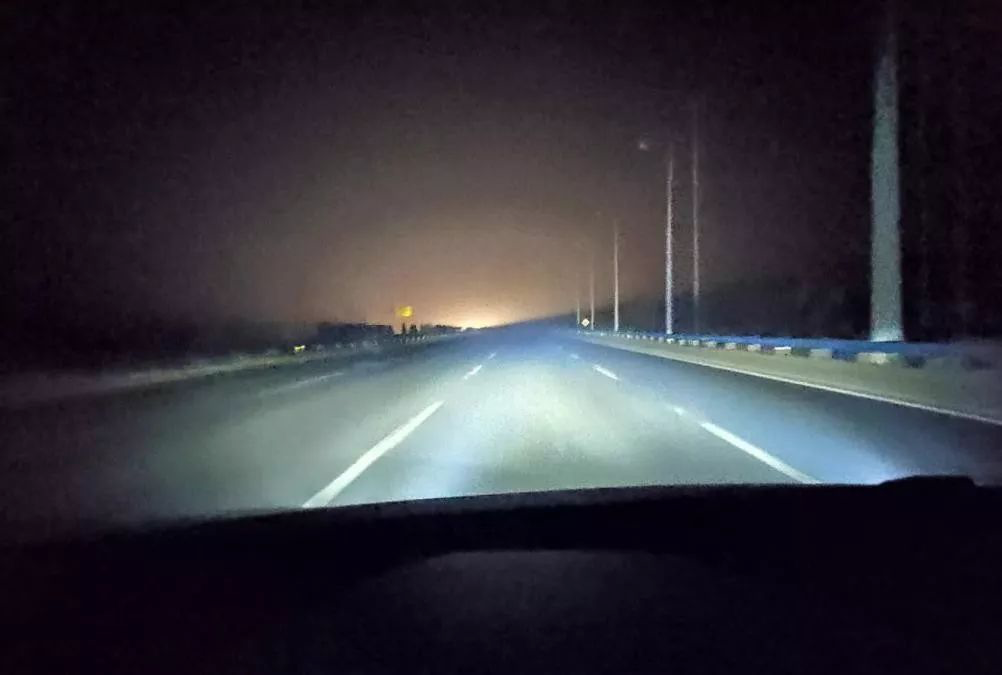
Finally, I arrived at my home in Luoyang at 03:14 in the morning, with a remaining mileage of 268 km.
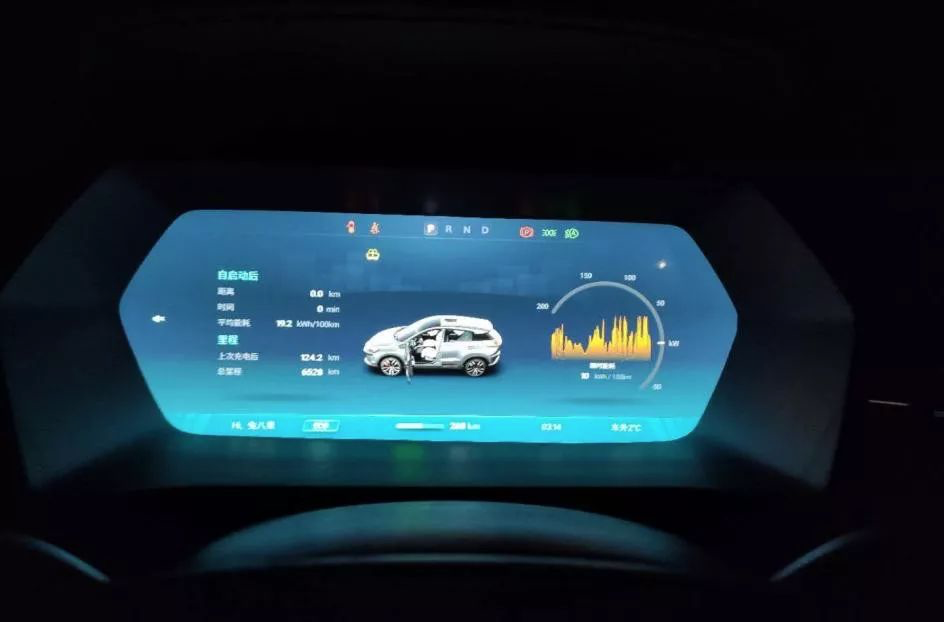
On this road, I experienced traffic jams, accidents, inability to recharge, and foggy sections. Although it was a bit difficult, I managed to overcome all the dangers on the road.
After entering the door, I found that my mother had not slept yet. Although she didn’t appear too nervous on the surface, from her reaction when I came in, I could tell that the family was still worried about me on this road. After all, this was my first time driving such a long way, and it was also during the spread of the epidemic.
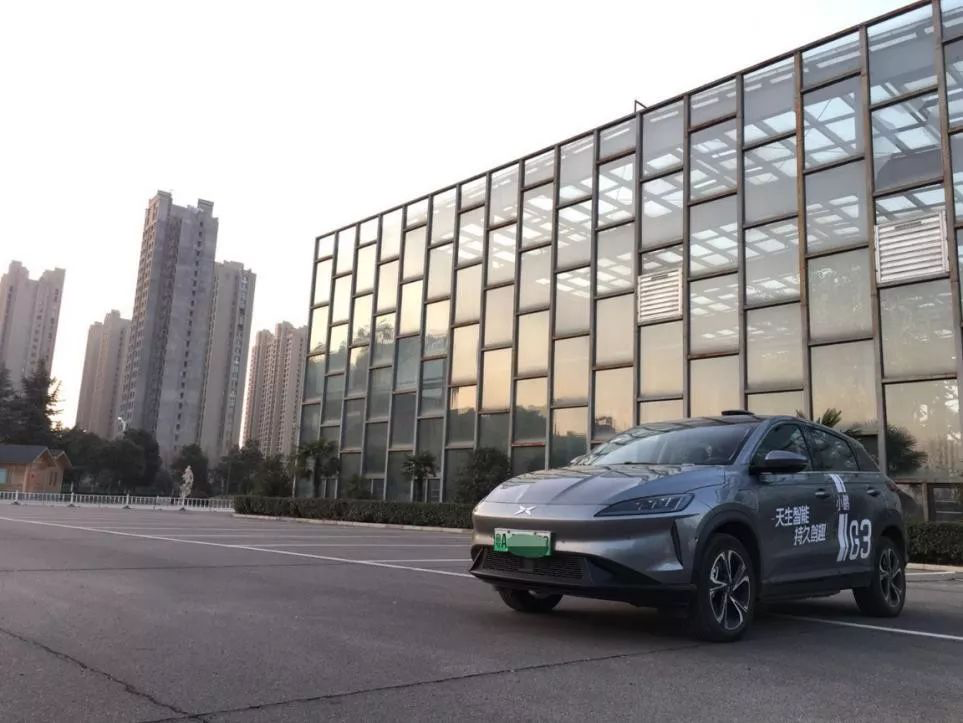
Summary
Now, let’s answer the question in the beginning “Is it feasible to drive long distances in electric cars?” I think it depends on personal circumstances. If time is not particularly tight, then I think it is still feasible because the time for rest and meals at the service area is enough to recharge the battery to a safe range. However, a break is necessary every 200 km, and the minimum time required is about 40 minutes.
As for the choice of car models, I recommend those with a range of more than 400 km. If you have never been to the destination before, be sure to reserve enough battery power before leaving your familiar area to cope with emergencies. Because you cannot be sure whether the charging facilities at the next service area are available, never take chances and always aim for stability.
This article is a translation by ChatGPT of a Chinese report from 42HOW. If you have any questions about it, please email bd@42how.com.
